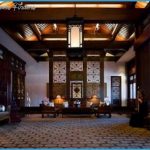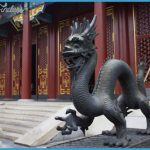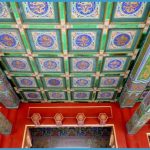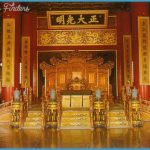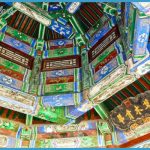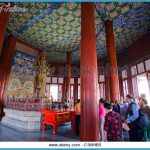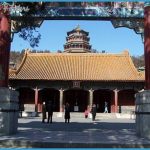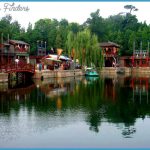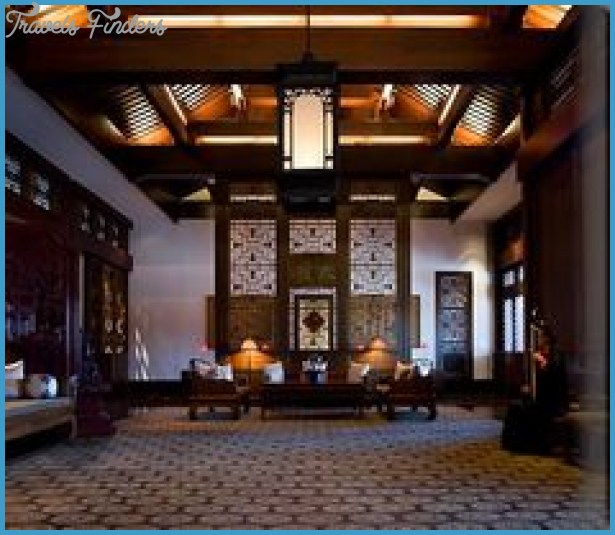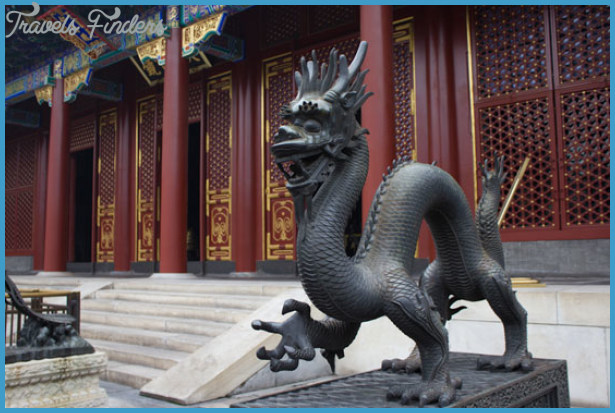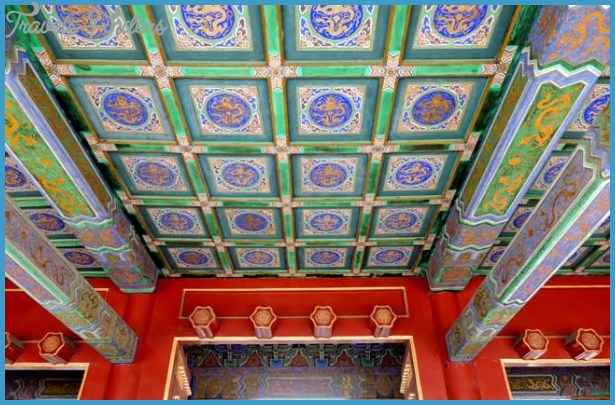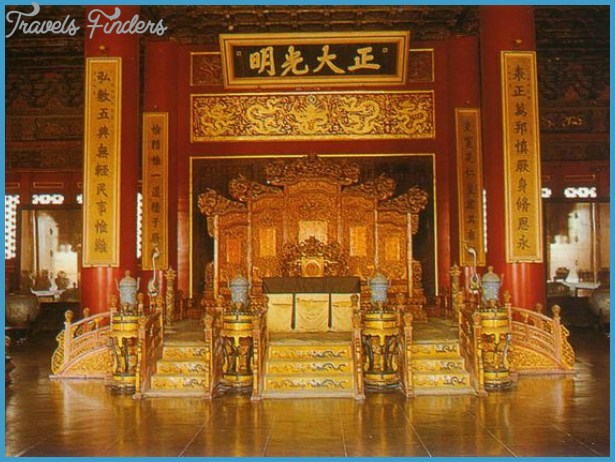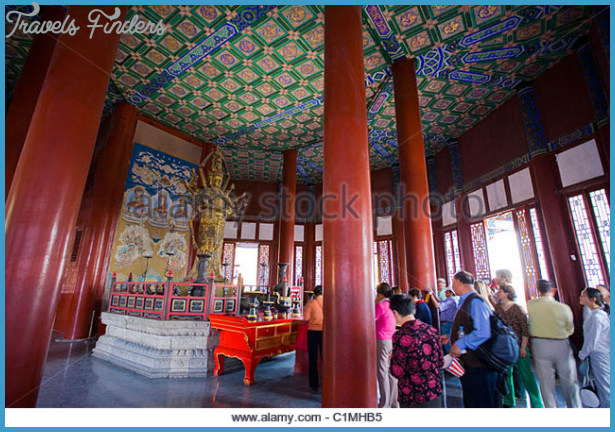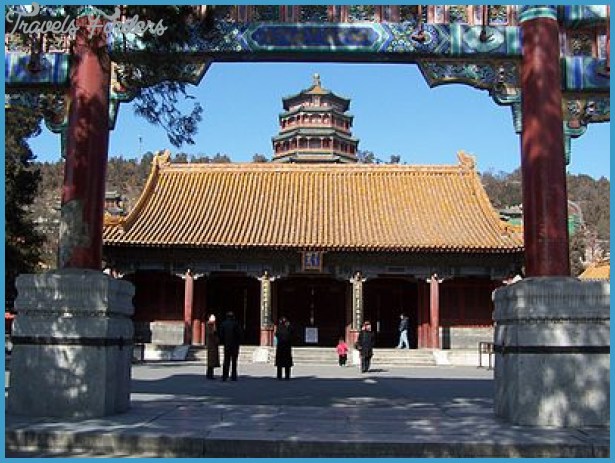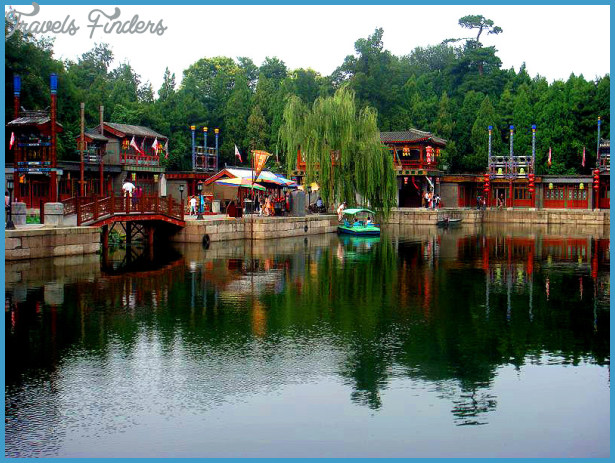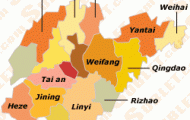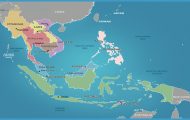This temple, lying further north, was built in 1764 at the behest of the Jiangxi Emperor to mark the defeat of the Dsungars. Inside, the carved statue of Ksitigarbha, the Ruler of the Underworld, is of interest.
The Temple of Universal Tranquillity, also known as the Temple of the Great Buddha, situated to the north-east of the Summer Villa, was built by the Qianlong Emperor in 1755 in a mixture of Chinese and Tibetan styles after he had subjugated the north-western territories. The temple became known for the wooden statue of Guanyin Bodhisattva, which stands 22m/72ft tall and weighs 110 tonnes. It stands in the Great Hall (Dacheng Ge), which is 37m/121ft high and isflanked by the Hall of the Sun and Moon. Further to the east will be found the Temple of Universal Blessings (Puyou Si). This temple dates from 1760 and also contains statues of the Buddha.
Further to the south-east stands the Temple of Happiness and Longevity of the Sumeru Mountain, one of China’s most magnificent historical monuments. It was built by the Qianlong Emperor in 1780 on the lines of the Tashilhunpo monastery in Tibet, to mark the visit of the sixth Panchen Lama. Note particularly the roof of the Great Hall, which is decorated with gilded coppertiles and dragons, each of which is 5m/16’/2ft long and weighs one tonne; in all, 1500kg/3300lb of gold were used to make them. At the highest point of the complex stands a pagoda with glazed tiles on the outside.
Temple of Far-spreading Peace (Anyuan Miao)
Temple of Universal Tranquillity (Puning Si)
Temple of Universal Blessings
Temple of Happiness and Longevity of the Sumeru Mountain (Xumifushou Miao)
The Temple of the Potaraka Doctrine to the north of the villa is the largest of the Eight Outer Temples and is modelled on the Potala Palace in Lhasa. It was built between 1767 and 1771 to mark the 60th birthday of the Qianlong Emperor Hongli. The main building isthe43m/140ft high Great Red Terrace (Dahongtai). The history of the Turgut tribe from Mongolia is inscribed on large stone tablets; in 1770 this tribe, which had spread as far as the Volga, undertook the 5000km/3000 mile trek back to China.
Temple of the Potaraka Doctrine (Putuozoncheng Miao)
Temple ofthe The Temple of the Manjushri Statue was erected in 1774. It is based on a Manjushri Statue building of the same name, but of much older date, which stands on the
(Shuxiang Si) sacred site of Wutaishan in the province of Shaanxi.

